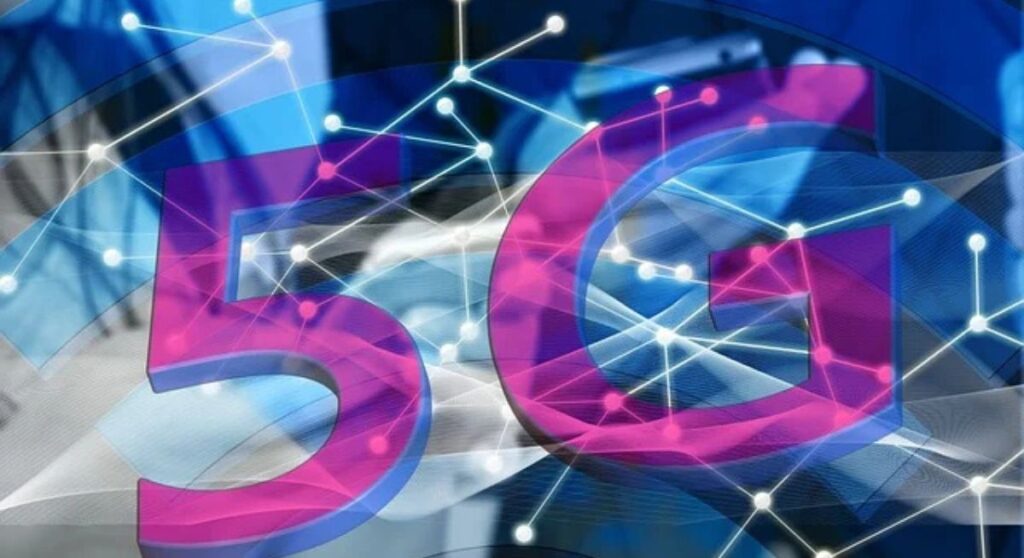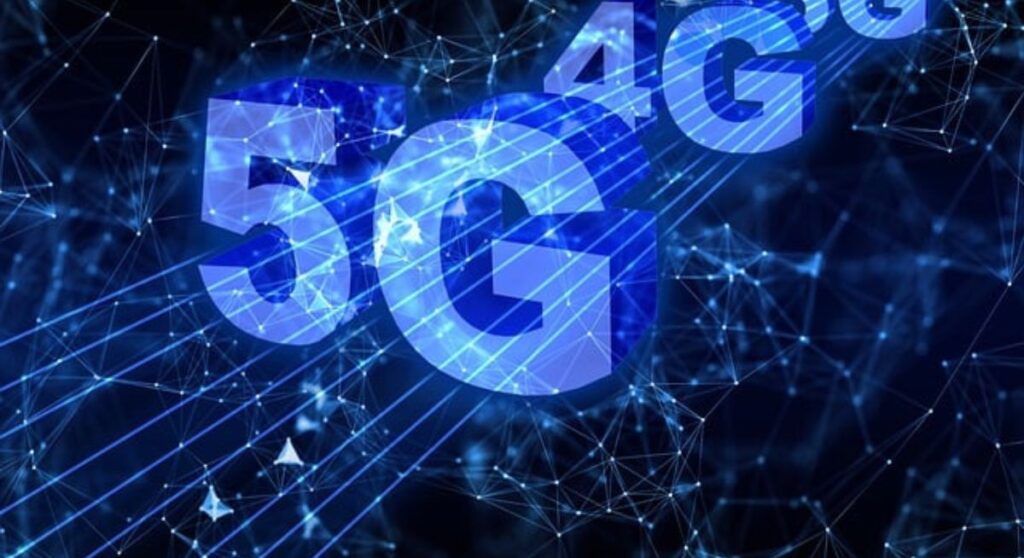Introduction:-
Top 7 Pros and Cons of 5G You Should Know

5G technology is revolutionizing telecommunications by offering ultra-fast speeds and low latency. However, it also comes with challenges. Here’s a balanced look at the key benefits and drawbacks of 5G:
Top 7 Pros and Cons of 5G
Top 7 Pros of 5G Technology
1. Blazing Fast Speeds
- 5G offers download speeds of up to 10 Gbps, which is up to 100 times faster than 4G networks.
- This allows for streaming 4K and 8K videos without buffering and downloading large files in seconds.
2. Ultra-low Latency
- Latency in 5G can be as low as 1 millisecond (ms) compared to the 50 ms seen with 4G.
- Low latency is essential for real-time applications like remote surgeries, autonomous vehicles, and multiplayer online gaming.
3. Greater Network Capacity
- 5G networks can handle more connected devices without degrading performance.
- This is crucial for smart homes, smart cities, and IoT ecosystems, where thousands of devices are interconnected.
4. Improved Connectivity in Crowded Areas
- 5G can maintain high speeds even in congested areas, such as stadiums, airports, and concerts, where 4G struggles.
5. Powering Future Technologies
- Innovations like smart factories, telemedicine, and augmented reality rely on the reliability and speed of 5G.
- It will enable breakthroughs in sectors such as transport, manufacturing, and entertainment.
6. Energy Efficiency for IoT Devices
- 5G networks are more energy-efficient, extending the battery life of IoT sensors and connected devices.
- This makes devices like smart meters and wearable technology more sustainable.
7. Enhanced Remote Work and Education
- With faster upload and download speeds, remote work tools, video conferencing, and virtual classrooms will operate more smoothly.
- 5G can improve the quality of experiences on platforms like Zoom, Microsoft Teams, and Google Meet.
Top 7 Cons of 5G Technology
1. Limited Coverage
- 5G is initially available only in urban areas, with rural regions lagging behind.
- The high-frequency signals used by 5G have a shorter range and struggle to penetrate walls and buildings.
2. Expensive Infrastructure
- Deploying 5G requires significant investment in infrastructure, including new antennas and base stations.
- Telecom providers will need time to fully roll out 5G networks, especially in remote areas.
3. Device Compatibility Issues
- Only newer smartphones and devices are compatible with 5G networks, meaning users need to upgrade.
- Devices like the iPhone 12 series or Samsung Galaxy S21 are some examples of 5G-ready models.
4. Increased Energy Consumption for Networks
- Although individual devices may benefit from energy savings, 5G base stations consume more power than their 4G counterparts.
- This raises concerns about the environmental impact of large-scale 5G deployment.
5. Security Risks and Privacy Concerns
- More connected devices mean a larger attack surface for cybercriminals.
- Security experts are concerned about vulnerabilities in IoT devices and data privacy issues.
6. Health Concerns and Controversy
- Although no conclusive scientific evidence links 5G to health issues, concerns about radiation exposure persist.
- Misinformation and conspiracy theories surrounding 5G have led to public resistance in some areas.
7. High Costs for Consumers
- Upgrading to 5G-compatible devices and data plans can be costly.
- Some telecom providers offer 5G as part of premium plans, making it less accessible to budget-conscious users.
Will 5G improve or worsen device battery life?
The impact of 5G on device battery life is a topic of debate, with both positive and negative aspects to consider:

How 5G Can Improve Battery Life
- Efficient Data Transmission:
Since 5G offers faster data speeds, tasks like downloading large files or streaming videos can be completed quickly, which could reduce the time radios need to stay active, thus saving battery life. - Network Slicing:
5G allows for network slicing—creating virtual networks optimized for specific applications, like IoT devices, which need less power. This customization helps certain devices extend their battery life. - Optimized Standby Mode:
Future improvements in modem efficiency (as chip manufacturers continue refining 5G components) will lead to better power management. Some IoT sensors designed for 5G can operate for years on a single charge due to this optimization
How 5G Can Worsen Battery Life
- Higher Power Consumption for Connectivity:
In areas with weak 5G signals, devices tend to use more energy to switch between 5G and 4G networks or maintain a connection, draining batteries faster. Early 5G modems are also less power-efficient than future iterations will be【 - Multiple Antennas and Frequencies:
5G phones use more antennas and connect to multiple bands (like mmWave and sub-6 GHz) to ensure faster speeds, which increases the overall energy consumption compared to 4G networks【25】. - Background Activities:
With 5G, apps may perform more frequent background updates and syncs due to the availability of faster internet, further contributing to battery drain.
In the short term, 5G adoption may lead to increased battery consumption, especially for early devices operating in areas with inconsistent coverage. However, as 5G technology matures, modem efficiency will improve, and future optimizations should mitigate these issues. For now, users might experience mixed results—improved battery life in well-covered areas and faster drains in regions with unstable networks.
What are the economic and environmental impacts of 5G deployment?
Economic Impacts of 5G Deployment

- Economic Growth and Productivity
- 5G enables higher internet speeds, low-latency communication, and greater device connectivity, which enhances productivity across industries.
- It supports innovations like smart cities, autonomous vehicles, telemedicine, and the Internet of Things (IoT), fostering new business models.
- The global 5G market is expected to contribute trillions to GDP by improving efficiency across sectors like manufacturing, healthcare, and transportation.
- Job Creation and Investment Opportunities
- Investments in infrastructure (like new antennas, base stations, and fiber optics) generate jobs in engineering, construction, and maintenance.
- Startups and companies leveraging 5G applications (like AR/VR and smart devices) will benefit from new market opportunities.
- Costs of Deployment and Infrastructure
- Upgrading from 4G to 5G requires dense network infrastructure, including small cells every few hundred meters, which can be expensive.
- Telecom companies face high upfront costs for spectrum licenses, infrastructure development, and network management.
- Disparities and Digital Divide
- High deployment costs may result in unequal access, with rural areas and developing countries lagging behind, exacerbating the digital divide.
Environmental Impacts of 5G Deployment
- Energy Consumption and Carbon Emissions
- 5G networks and infrastructure (such as small cells and data centers) require continuous power, leading to increased energy consumption.
- If powered by non-renewable energy, 5G can contribute to higher carbon emissions.
- E-Waste from Equipment Upgrades
- Replacing existing 4G infrastructure and devices generates electronic waste (e-waste). This poses environmental hazards if not properly managed or recycled.
- Shorter lifespans for consumer devices as users upgrade to 5G-compatible models further contribute to e-waste.
- Potential for Greener Solutions
- While the initial energy demand is high, 5G networks are more efficient per unit of data transferred than 4G.
- 5G can enable smart energy grids, precision agriculture, and intelligent transportation, reducing waste and optimizing resource use, thus having a positive indirect environmental impact.
- Increased Data Consumption and Cloud Use
- Faster networks encourage higher data consumption, increasing the load on data centers, which require significant cooling and energy resources.
In summary, 5G deployment promises significant economic benefits through innovation and job creation but presents challenges in terms of cost, digital inequality, and environmental sustainability. Managing energy efficiency, promoting recycling, and transitioning to green energy sources will be essential to mitigate the environmental impacts.
Conclusion: Is 5G Worth It?
5G technology undoubtedly brings game-changing advancements, but it also comes with a set of challenges. Its promise of ultra-fast speeds and low latency will pave the way for innovations across various industries. However, limited coverage, high infrastructure costs, and security risks remain significant hurdles.
For consumers, the decision to adopt 5G depends on individual needs—whether you rely on fast internet speeds or prefer to wait until the network becomes more widespread and affordable. As 5G continues to evolve, it is expected to become a fundamental part of our digital infrastructure, unlocking possibilities that were previously unimaginable.
FAQs
1. When will 5G be available everywhere?
5G networks are expanding gradually, but full coverage in rural areas may take several years, with 2025 being a likely target.
2. Do I need a new phone for 5G?
Yes, only 5G-compatible devices can access the network. Older devices will continue to use 4G or LTE networks.
3. Does 5G increase my data usage?
Since 5G enables faster streaming and downloads, you may consume data more quickly if not monitored.
4. Is 5G safe?
Current studies show that 5G is safe, with no proven health risks, but ongoing research is being conducted to ensure safety.
By staying informed about the pros and cons, you can make better decisions on when and how to adopt this transformative technology.

